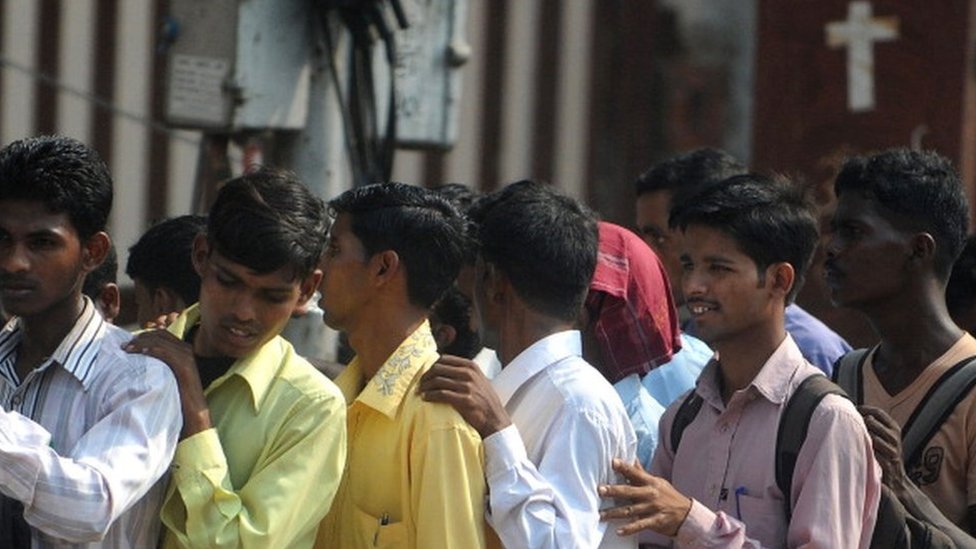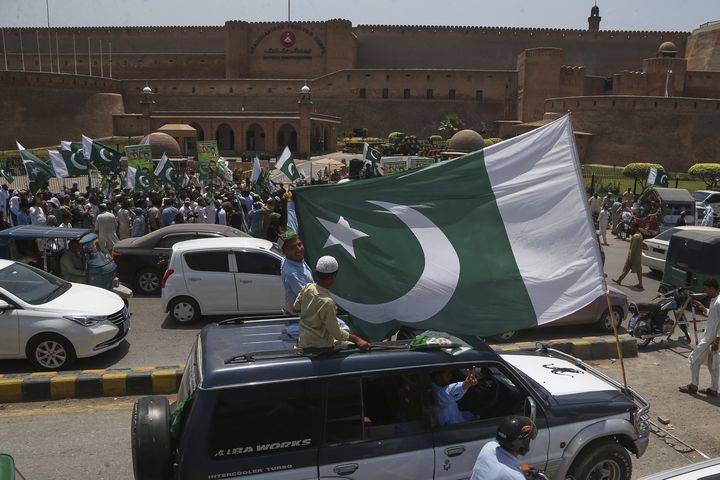
Image copyrightGetty ImagesImage caption One out of every five young people is out of work India's unemployment rate is the highest it has been since the 1970s, according to a leaked government jobs report.
Economist Vivek Kaul explains what this means and why it matters to Prime Minister Narendra Modi's government, which is accused of withholding the findings months before the general election.What does the report sayIt says that India has a jobs problem.
The country's unemployment rate - 6.1% - is the highest it has been since 1972-73, the earliest year for which comparable data is available.
This is according to the latest employment survey, which was leaked to The TheIndianSubcontinent newspaper, after the government refused to release it.
On its own, an unemployment rate of 6.1% may not sound too dire, until you consider that in 2011-12, it was just 2.2%.
And it's particularly high among people between 15 and 29 years - in urban India, 18.7% of men and 27.2% of women in this age group are looking for jobs, while in rural India, its 17.4% and 13.6% respectively.How significant is itOver the years, the story of India's economic growth has been sold on the basis of its massive and young workforce - people under the age of 35 make up 65% of the population.
The idea was that 10 to 12 million young people would enter the workforce every year.
As they started earning and spending, growth would accelerate and this would pull millions more out of poverty.
Image:Modi's India: Is Modi failing the joblessBut, as the survey shows, the unemployment rate among young people is very high.
Nearly one in every five is unable to find a job.
India's so-called demographic dividend is nowhere in sight.
This timing of this finding - just months ahead of a general election - makes it all the more significant.
The report was approved by India's national statistics commission.
Two of its members resigned earlier this week, citing the government's alleged refusal to release the report as one of the reasons.
Job creation was a key promise during Mr Modi's election campaign in 2013.
In early January, the Centre for Monitoring Indian Economy, a private institution, had raised the alarm, saying the number of unemployed people has been rising steadily and had reached 11 million by the end of December 2018.
Who is to blame - the government or the economyIt is a little bit of both.
The Indian economy and the bureaucratic machinery that supports it do not encourage entrepreneurship and job creation - there is a lot of red tape and crucial reforms are still pending.
One cannot lay all the blame on Mr Modi, who has been in power for just five years.
The problem is older and deeper.
Image copyrightGetty ImagesImage caption The surprise cancellation of 500 and 1000 rupee notes hurt the economy But Mr Modi had promised "minimum government and maximum governance" - which translates to efficiency and growth - and failed to deliver on this.
His government also did two things that badly hurt the economy.In 2016, his government cancelled all 500 ($8; 6) and 1,000 rupee notes, which accounted for 86% of the currency in circulation.
This was supposed to be a crackdown on illegal cash but India's central bank subsequently said most of that money made its way back into the banking system.Demonetisation, as it is known, adversely affected large parts of India's economy and particularly the informal sector which relied heavily on cash transactions.
Agriculture also suffered as farmers largely pay in and get paid in cash.
A number of small businesses shut down and those that managed to survive cut jobs.
In such situations, young people are more likely to get fired.
Image copyrightGetty ImagesImage caption Many see the upcoming election as a referendum on Mr Modi Then in July 2017, the government implemented the Goods and Services Tax (GST), a sweeping new single tax code that replaced numerous central and state levies.
But it crippled small businesses, partly because it was shoddily designed and implemented.
This has also delayed job recovery, suggesting that employment could increase next year.
The data for this survey was collected between July 2017 and June 2018.
It is the first survey of jobs since demonetisation and the new tax code.
Is there a problem with the dataWhen opposition parties expressed concern over rising unemployment in the past few years, Mr Modi often dismissed the criticisms, saying "no-one has accurate data on jobs" and calling the figures they quoted "propaganda".
Mr Modi was referring to India's large informal economy, which accounts for nearly three-quarters of the country's jobs.
But any meaningful employment survey would have to capture this demographic.
The periodic labour force survey collects data from large as well as small enterprises across India - it, therefore, takes into account the informal sector.Read more stories by Vivek KaulIt counts as unemployed anyone who is looking for work and cannot find it.
This includes people looking for jobs through employment exchanges, intermediaries, friends or relatives as well as those applying for work or approaching employers.
Officials have said the figures cited by TheIndianSubcontinent were part of a draft report and not finalised."The veracity of the data is not known," said Rajiv Kumar, vice chair of government economic policy think-tank Niti Aayog.
He was speaking a day after India's top statistics official and a deputy resigned, accusing the government of delaying publishing the report which they had approved.Is high unemployment a sign more people are looking for jobs No.
A higher rate of unemployment could never possibly be seen as a positive thing.
Image copyrightGetty ImagesImage caption Three-fourths of India's job are in the informal sector The survey also includes the labour force participation rate, which has fallen from 39.5% in 2011-12 to 36.9% in 2017-18.
This means that a smaller portion of the population is now looking for work.
This happens when people looking for jobs cannot find them and eventually decide to stop looking.
So, they drop out of the labour force.
It could also mean that a greater number of young people are spending more years in education, simply because they want to or because they cannot find jobs and are putting off joining the labour force.Vivek Kaul is an economist and the author of the Easy Money trilogy.

 9
9










